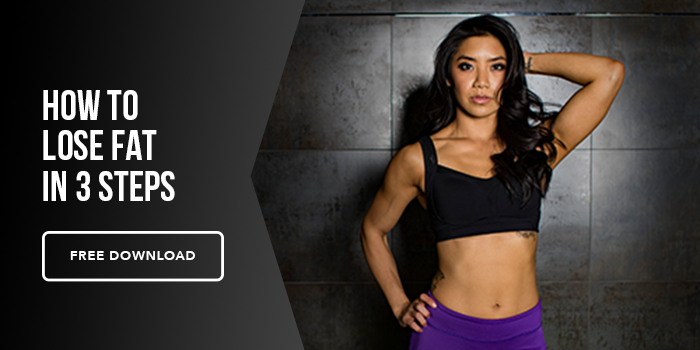No form of cardio is bad. Cardio, like anything else, is a tool to help achieve a goal. If you overuse a tool it can go from helping you get to your goals to being overkill. We all lie somewhere in the spectrum from doing too little to doing too much cardio.
What Is Your Goal?
This is the question you should be asking yourself whenever you begin an endeavor or are taking on a new task. If you are going to start implementing cardio, remember to check in with yourself, particularly as several weeks go by.
If you are trying to lose weight, you may have decided to start bumping up the amount of cardio you do to create a deficit that allows you to burn more calories and thus allow you to lose weight. I do recommend, when starting your fat loss journey, to make sure you are already incorporating resistance training 2-3x a week first before adding in any sort of cardio. Check out my article in The Pro’s and Con’s of Weightlifting vs Cardio for more information on why that is important.
Why Doing Too Much Cardio is Bad
Like anything else in life, if you go on the excessive end of the spectrum, yes, then cardio is bad. So is drinking too much water, or lifting too heavy of a weight. The damage is in the dosage. Cardio isn’t an issue in itself. What generally tends to happen is people who want to lose weight start with going out for a run because it’s an easy entry to fitness compared to lifting. The first two weeks they start to see the weight come off the scale, and assume it’s because of the cardio. Now they think, if they lose some weight doing a little cardio, then if they add MORE then they will lose more weight and get to their goals faster. That’s true to an extent.
If all you had were 4-8 weeks to get ready for a wedding, and the goal was solely to lose weight for that specific date, then yes, the focus is going hard for those 4-8 weeks. If your goal is to look toned, and muscular, then that’s the worst way to go about your goals. Cardio does not provide a strong enough stimulus to build nor shape any muscle. If all you did was cardio on a diet, you’d just become a smaller, skinnier version of yourself. If you wanted to have nicer shoulders, or more defined arms and legs, you’d need resistance training to build that muscle.
This is why cardio being bad, is all a matter of context and goals. If all you want to do is lose weight for an event, go for it. If you want a specific look, you need a specific plan. Your body is also very adaptive. If you are in a deficit of calories, and adding more and more cardio each week, your body will slow down its metabolism to adjust to the increase of work vs the lack of calories coming in. So you are actually burning LESS calories over time, as you continue to add more cardio which means you’d have to do more and more cardio just to achieve the same result. Resistance training has the opposite effect.
If weight loss is the goal, and you are already resistance training 2-3x a week, I still wouldn’t make cardio at the gym the next move.
Cardio Hierarchy for Fat Loss
Increase NEAT First - yes, adding 5-6 days of 45 minutes of cardio may get you to your goal quicker right out of the gate when trying to lose weight, but we need to think about the bigger picture. The issue for most people isn’t losing weight, it is keeping it off afterwards. Anyone can grind for 2-4 weeks and shed 10-15lbs if they really wanted to. How do we sustain this?
In order to create sustainability, we need to develop habits you can keep up longer term. Whenever implementing any new fitness habit ask yourself “Can I see myself still doing this 6 months from now?” If the answer is no, then simplify the task into something you can visualize yourself doing long term. This is where NEAT can come into play.
NEAT is increasing your non exercise activity. Think of this as all the movements you are doing outside of the gym. I emphasize focusing on increasing this activity because it is easier to make a part of your daily life. Let’s say your goal is 30 minutes of cardio a day. Instead of trying to jog on the treadmill for 30 minutes, how about walking for 10 minutes after breakfast, lunch, and dinner? If you are in the office all day, how about taking your meetings outside for a walk, or going for a walk during your phone calls? Try to think of ways you can integrate more movement (and thus calorie burn), into your day instead of forcing your life around cardio.
Use step counting as a way to quantify it. If your average step count was 8,000 steps, start by increasing it by 2,000 and then see if the scale moves. Once it plateau’s, try adding another 2,000 steps.
HIIT Cardio - High Intensity Interval Training in my opinion is the next best option if you are able to handle it. It short bouts of 10-30 second all out sprints followed by a period of steady state movement or rest. It only takes 15-20 minutes, and because of those bouts of high intensity, helps you burn just as many calories as a 45-60 minute steady state jog.
But once again, I caution against overdoing it. If all you do is HIIT cardio every day, especially on a diet, you risk overtraining and under recovering. You should only be doing HIIT style cardio 2-3 times a week. Fill any extra movement with NEAT or steady state cardio.
Steady State Cardio - I put steady state last as a way to fill the gaps. Ideally you’ve already hit your cardio targets with a mixture of NEAT and HIIT. But for those who can’t handle or do not enjoy HIIT, or have step count targets that don’t get met using the two above, they can now include steady state cardio as a way to top off their goals.
So if you are very deep into your diet because you had a lot of weight to lose, and lets say your step count has bumped up to 18-20,000 steps, you may find it very difficult to get that through HIIT and extra movement throughout the day. Maybe you’re stuck at 15,000. Go for a jog, or a ride on the elliptical as a way to get that last 3,000.
Remember These Are Just Tools!
Whether your goal is cardiovascular health or weight loss, remember to check in with yourself every 3-4 weeks. Increasing your step count was a means to an end! Don’t try to sustain more than you can handle! Once you are done with your fat loss journey, take that step count down to 10,000 or whatever you can easily manage while still maintaining the health benefits. It doesn’t take the same level of work to maintain your new physique, as it did to get to it.






